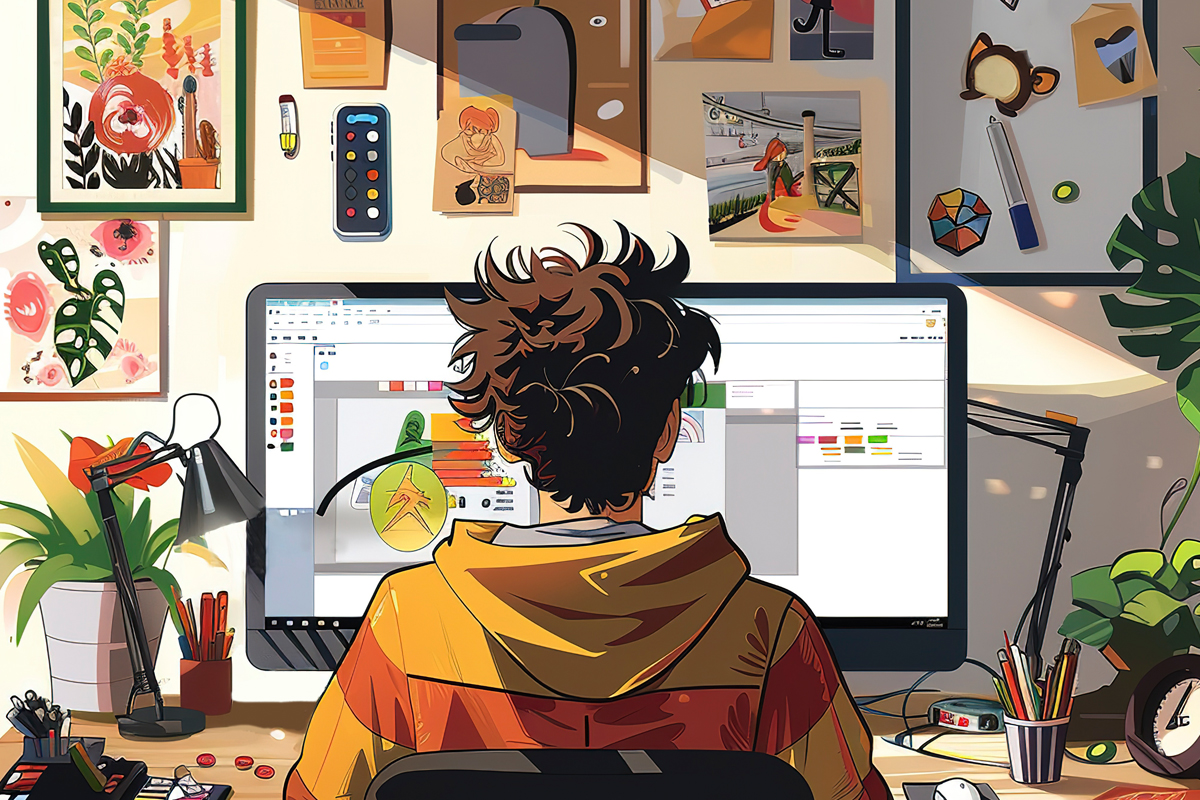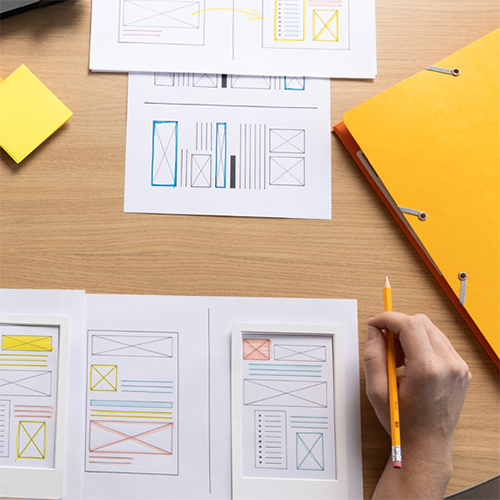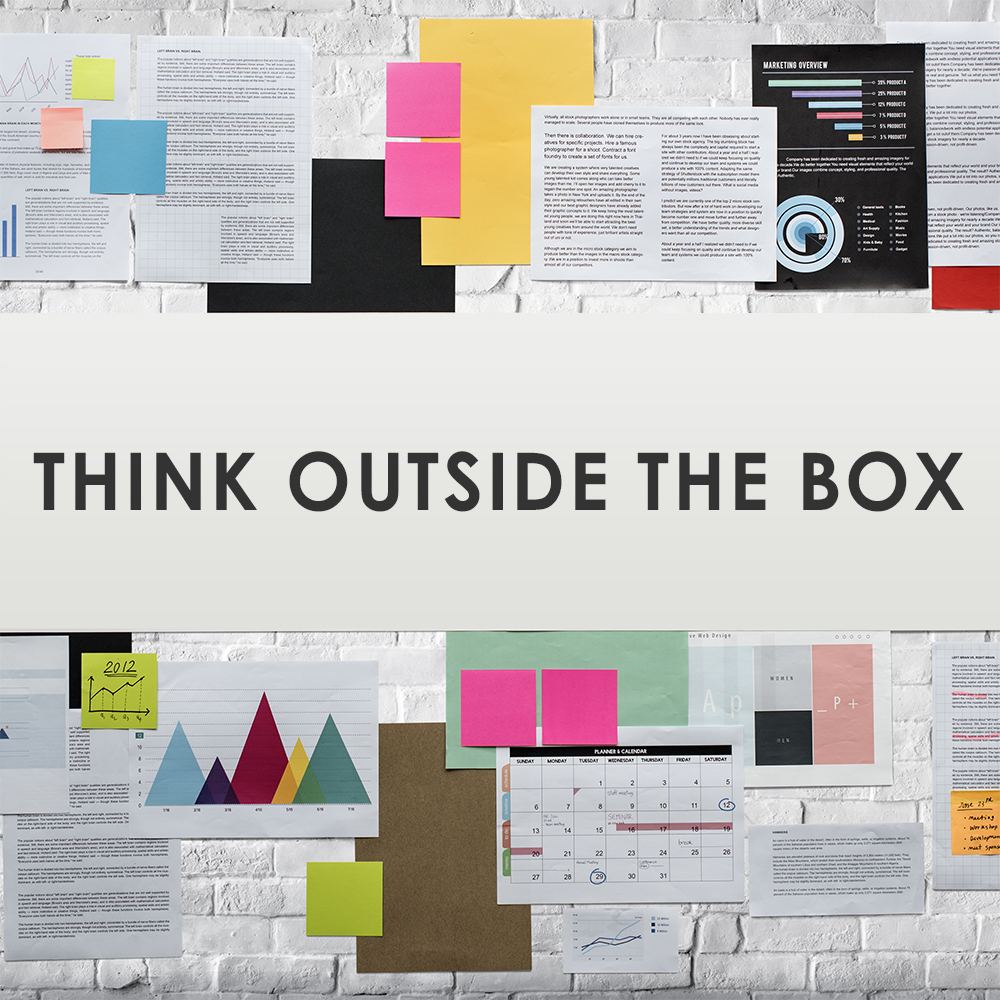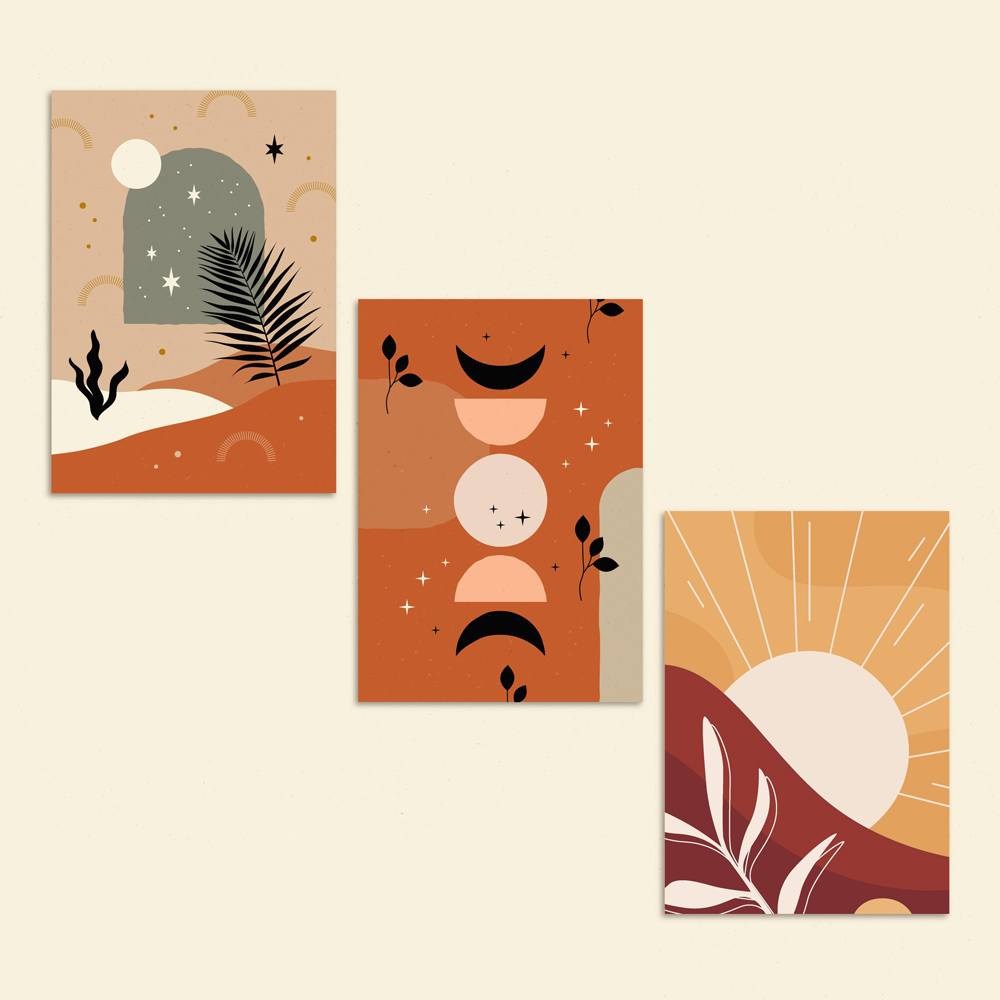IIn 2005, when I first stepped into the professional world of digital design, Adobe Photoshop CS2 had just launched. Macromedia Flash was still a thing, and tools like CorelDRAW were standard in every designer’s arsenal. We manually sketched logos, traced them digitally, selected typefaces based on personal libraries, and iterated endlessly without the speed, suggestions, or previews we take for granted today.

Back then, creativity was purely human-powered. You had to know your grids, typography rules, color theory, and be a good observer of visual culture. It took real time and patience to craft something distinctive. There was no quick fix, and definitely no AI suggesting five logo mockups before your tea or coffee even cooled down.
But today, everything is different.
How AI is Changing the Creative Workflow
Fast-forward to 2025, and tools like Adobe Firefly, Midjourney, Runway ML, and ChatGPT are not just assisting us, they are now part of the creative team. As someone who once had to draw every motion graphic frame-by-frame, we now use Runway to generate video-style variations, content expansion, and frame interpolation in minutes.
With Midjourney, we can generate dozens of conceptual styles for branding, environments, or mood boards , all without even opening Illustrator. With Adobe Firefly, background removals, object replacements, or type-driven image generation feels almost like magic.
The biggest leap, however, is in ideation. ChatGPT helps us brainstorm tagline options, brand voice definitions, or even interactive content plans for websites based on a client’s industry.
This isn’t about replacing creative direction. It’s about supercharging it.
What We Used to Do vs. What AI Let Us Do Now
Let’s break it down with an example.
- I’d sketch 5–7 logo ideas by hand.
- Use Illustrator for vectorization.
- Explore fonts manually from thousands.
- Revisit the design after a night’s sleep to fine-tune every stroke.
Then:
- We feed the brand brief into Midjourney or Firefly to explore styles.
- Use Illustrator with AI suggestions for font pairings and logo symmetry.
- Refine the AI output manually, adding the human strategy and storytelling it needs.
Now:
The foundation hasn’t changed. Creativity, vision, and taste still win. But the tools have removed the “blank canvas paralysis” and shortened the distance between inspiration and execution.
Tools That Evolved with Us — and Those That Didn’t
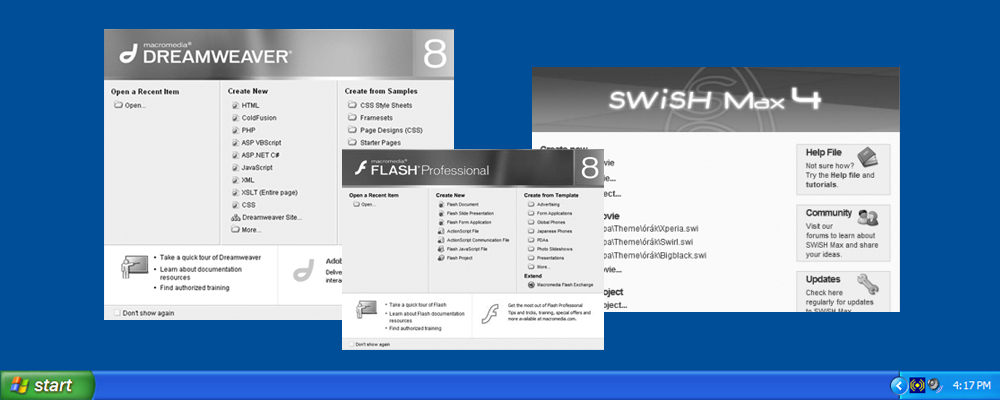
A few tools from 2005 evolved instead of becoming obsolete.
- Adobe Photoshop & Illustrator: once static programs, now AI-powered with neural filters, live font suggestions, object detection, and even Firefly integration.
- CorelDRAW: still around, but now mostly overshadowed in mainstream branding workflows.
- Flash and Swish MAX: completely gone. What used to be a Flash or Swish animation is now replaced by After Effects, motion UI kits, or AI-powered video generation.
- Adobe Dreamweaver: I personally have a soft spot for this one. I still remember when I first started using Dreamweaver back in 2007, during my time at GreenFin, the first offshore development services company I worked for. Dreamweaver was a powerhouse for web design and development back then. From WYSIWYG layout building to split-code views, it made front-end development feel smooth and professional. Those early days of slicing PSDs, manually updating HTML and CSS, and uploading via built-in FTP are memories I truly miss.
Why AI Integration Has Become Mandatory
Clients expect speed. Teams demand consistency. Audiences want personalization. You simply can’t deliver all three without integrating AI.
As someone running a full-service design agency (Evocative Technologies), I’ve seen the shift first-hand. We don’t just deliver faster now, we deliver better. Our branding projects are more data-backed, our visual storytelling more adaptive, and our client onboarding faster than ever.
But more importantly, we now reserve more time for creative strategy. AI has helped us eliminate the repetitive drudgery work so we can focus on the high-impact thinking that makes a brand memorable.
Final Thoughts
AI isn’t the future of brand design. It’s the present.
The key is to embrace it not as a threat, but as a creative partner. And just like any partnership, the best results come from knowing when to lead and when to collaborate.
Whether you’re just starting in design or have been in it since the days of Dreamweaver and Flash, there’s never been a more exciting time to create.
Let the tools evolve, but keep your vision sharper than ever.
